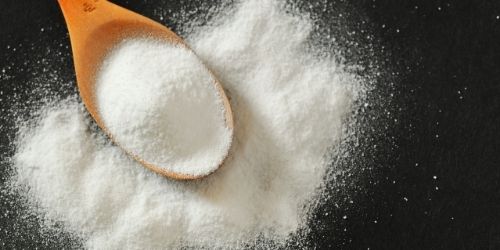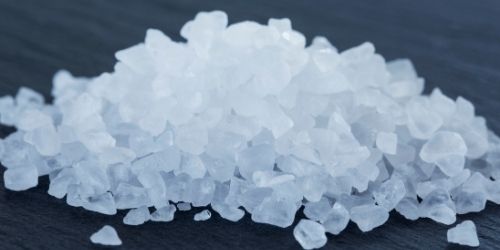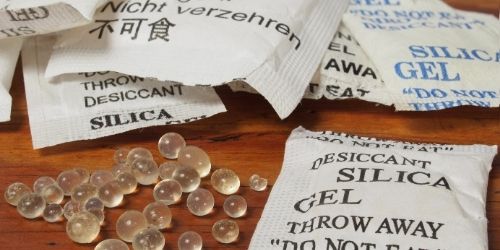How to remove humidity from a room without a dehumidifier?
3 Key Takeaways:
🚀 High humidity levels in your home can cause damage to property and health, including mold growth, mildew, dust mites, and allergens.
🚀 The best way to remove excess moisture from the home and maintain relative humidity within the house is to invest in a dehumidifier.
🚀 It is possible to remove humidity in your home without a dehumidifier by using alternative methods such as baking soda, laundry detergent, charcoal, and rock salts.
Humidity problems that have caused someplace in their home; be it a basement, living room, bathroom, etc. Humidity in the house causes more damage than what meets the eye. Too much humidity in your home does not just stop with mold growth on the walls, mildew in the carpets, dampness everywhere, rather high humidity is capable of leading to health problems as well.
The best way to remove excess moisture from the home and to maintain relative humidity within the house is to invest in a dehumidifier.
A dehumidifier will absorb the moisture from the air and make sure the humidity in the home is maintained within the ideal relative humidity level. The device will keep dampness away, which prevents mold and mildew, dust mites, and will also get rid of other microscopic allergens.
You and your home can be protected against the constant attack of allergies. Although investing in a dehumidifier to reduce indoor humidity in your home is the best option, it is not a feasible choice. There are more than one ways to dehumidify a room without a dehumidifier. Yes, you read that right! It is possible to remove humidity in your home without a dehumidifier. Let’s keep reading to know more.
How do you know if it is too humid?
High humidity levels are easy to predict. You will feel stuffy, uncomfortable, hot, and no amount of air conditioning, open windows, and doors, or ventilation would help. You can identify increased levels of humidity when evaporation of moisture does not happen. High humidity levels occur when the air is laden with excess moisture.
There is so much moisture in the air that the atmosphere can no longer absorb the water expelled by the body in the form of sweat. Everyday activities that also increase the heat and dampness within the house will contribute to the increase in air humidity since they also have no place to escape. Showering, drying laundry inside the home, cooking, dishwasher, space heater, water damage, poor ventilation, and air conditioning, etc., are a few of the things that can pave way for high humidity in your home.
When moisture from the air is not removed or dealt with appropriately it will cause humidity problems. These could be a problem or damage to property or health. If you notice a sudden burst of dampness in your home (on the walls and things around the house), mold growth, mildew, dust mites and allergens on things and air as well, lack of air flow or fresh air circulation, difficulty in breathing, increased allergic reactions, more heat inside the home, condensation on the windows and doors, etc., it could mean your home is battling against high humidity.
Is high humidity levels in the house dangerous??

Yes, high humidity levels in the house are dangerous to health and property. This is because of several other accompanying problems that arise from high humidity in the air, like mold, mildew, dust mites, and allergens.
When mold affects property, you will have to seek the help of professional expertise to get rid of it completely. Once affected by mold or mildew, the property cannot be restored beyond an extent. You will have to shell out money, time, and effort to restore the entire house after a mold outbreak. Mold spores will not die but will dry out.
Even after professional mold removal, it is essential to maintain an environment that is unfavourable for mold spores to be reactivated by making use of the right dehumidifier or by resorting to other ways to dehumidify your home. Only this will guarantee that your home has reduced moisture in the air.
One also has the threat of contracting serious health issues from fungal exposure. If anyone in your home has preexisting health problems like asthma, respiratory disorders, or persistent allergies, they are at a higher risk from the consequences of high humidity levels. It is important to employ any way that will remove humidity and reduce the moisture in the air.
How to reduce humidity in a room naturally – 7 simple methods to remove humidity
Are you wondering how to remove humidity from a room without a dehumidifier? There are different ways to dehumidify a room without a dehumidifier by using simple everyday products that you find in your house. One can also remove humidity from the air by making some changes around the house. Let us see how this can be done without a dehumidifier.
1. Baking Soda

Something as simple as baking soda can actually remove humidity from a room to an extent. It isn’t as effective as a store-bought dehumidifier device, but it can certainly absorb moisture, and also keep the surrounding place free from the musty smell that comes from dampness and mold build-up. You can sprinkle some baking soda on mold spots and stains to remove them. The baking soda will dry out the area and keep it smelling fresh. Are you having trouble with high humidity levels in the shower after a long warm bath? Worry not, baking soda can come to your rescue. All you need is a good amount of baking soda in a small bowl, left open in the bathroom where it will not get wet. This will not only prevent the humidity and moisture from spreading all across the bathroom, but it will also prevent fungal growth. This makes one excellent way to dehumidify a room without a dehumidifier.
2. Rock Salt

Here is another simple yet effective way known to dehumidify a room naturally- Rock Salt! This has been used as a natural dehumidifier over the years to keep moisture and humidity under control. Rock salt can absorb moisture and odor resulting from a wet environment, which is exactly what you expect from a dehumidifier. However, this is definitely helpful in most situations to extract moisture from the air and surrounding. You can make your own Rock Salt Dehumidifier by using the things around your house.
You will need:
» 2 Buckets or container
» Any sharp object to drill holes
» Rock salt
All you got to do is, drill some holes into the sides of one of the buckets and place it over the other one. Empty rock salt into the bucket and leave it in the room in need of humidity control. The rock salt will collect into the bucket at the bottom as it extracts moisture from the air. You can discard this water as and when possible and keep replacing the bucket with fresh rock salt. This easy method is efficient and cost-effective.
3. Charcoal Briquettes

Next on the list of dehumidifiers that can be made at home, we have charcoal briquettes. This is another famous method to naturally dehumidify a room. Charcoal is simple and efficient in absorbing moisture from the air. If you experience high humidity in any room in your house, you can use charcoal briquettes to handle the problem with ease.
You will need:
» Charcoal briquettes
» Can or tin with a lid
» Screwdriver or any sharp object to drill holes
Make holes into the sides of the can and add the charcoal briquettes into it. Cover the can with the lid and place it in the room in need of moisture removal from the air. This can be a great choice as DIY dehumidifiers for the bathroom, kitchen, closet, etc. It is no replacement for actual dehumidifiers, but charcoal can do a decent job at air drying for small spaces within your home. Remember to replace the charcoal within the can every few months since it will lose its air drying capacity after few months.
4. Silica Gel

Have you been throwing away the small packets of silica gel that come inside shoe boxes and containers? Maybe it is time for you to start saving them. Silica gel is another smart way to remove humidity from a room without dehumidifiers. It can be just tossed into any place in need of water removal from the air. You can use silica gel pellets by keeping them in an open container or bowl inside closets, kitchens, cabinets, etc. It is highly functional that it can even be used to remove moisture penetration that has happened inside a wet phone as well. Another added advantage is that it is reusable after reheating it in the oven for a couple of hours.
5. Boston Fern

Few home plants make it possible to regulate humidity in a room without a dehumidifier. One among them is the Boston fern, a common plant that thrives in high humid areas. You can have this low-maintenance plant anywhere in your house; dining tables, bathrooms, living room, or kitchen. It loves moisture and requires very little watering (twice a week) since it can nourish itself from the moisture content in the air. Boston fern is a brilliant way to handle humidity naturally.
6. Peace Lily

Here is another plant among natural dehumidifiers. Peace lily is also low maintenance and does not need much water. It thrives on the moisture content it extracts from the air. However, a word of caution that comes with Peace lily is that it is slightly toxic. Remember to keep toxic plants like these out of reach of children and pets.
7. Reed Palm

This tropical climate palm is also one among the natural dehumidifiers that love high temperatures with humid air. It can absorb moisture from the air and also filter it. Reed palm is slightly high maintenance; it requires moist soil at all times and needs to be planted on the floor that will not hinder its growth. If you have sufficient room to have Reed palm in your home, you can add this to your natural dehumidifiers list.
What happens if you don’t use a dehumidifier?
Neglecting the use of dehumidifiers will lead to serious problems that arise from continual exposure to humid air. Although an occasional day or two of high humidity in the environment may not cause harm, it can turn hazardous when it continues for weeks or months together. Humid air paves way for fungal growth, deterioration of respiratory health, damage to property, and more.
It is recommended that you undertake natural ways to dehumidify a room using readily available products like calcium chloride, baking soda, etc. if it is not feasible to purchase a dehumidifier. You can also make some adjustments in your home, like avoid drying the laundry inside, keep the windows open to let sunlight in (if that is possible), always have a can of calcium chloride or any other natural dehumidifier in the kitchen or shower. These simple steps will help you to manage humidity and its consequences without a dehumidifier that is store-bought.
FAQ Section
1. How to reduce humidity in the house in winter?
You can reduce the humidity within your home by ensuring that moisture does not get trapped inside. Making room for air circulation will prevent humidity from accumulating in your home.
‣ Keep wiping down condensation that forms on windows or doors.
‣ Do not turn on your humidifiers; these will add more moisture to the air during colder weather.
‣ Turn on bathroom fans and furnace fans. These will encourage air circulation, preventing humidity from building up.
‣ Open windows, doors, drapes, and blinds; if and whenever possible to let the moisture escape and to promote air flow.
‣ Remember to turn on the kitchen range hood every time you cook or boil water.
‣ Using simple natural dehumidifiers like; house plants that dehumidify, baking soda, calcium chloride, rock salt, charcoal, etc.
2. Is 70 humidity in a house too high?
Maintaining indoor humidity at 40% to 70% is recommended by the Health and Safety Executive. However, most people find the range 30% to 60% extremely comfortable to stay in. It is also noticed that allergy symptoms are at a minimum within this range. Humidity can also be relative depending on the weather conditions that exist outdoors.
3. What humidity grows mold?
30% to 60% is found to be the ideal range for indoor humidity. When it shoots above 70% for prolonged periods of time it is found to cause mold growth. You can take measures to maintain the humidity under 70% to prevent this; either by using store-bought dehumidifiers or by using natural dehumidifiers.
Wrapping Up
With this, we have reached the end of this article. Hope this answers your questions on ‘How to remove humidity from a room without a dehumidifier?’.
Make sure you try the different methods listed above to remove humidity using everyday things available at home. Keep yourself and your home safe from humid air at all times with minimal cost. Let us know which DIY dehumidifiers or plants that are natural dehumidifiers worked best for your home.